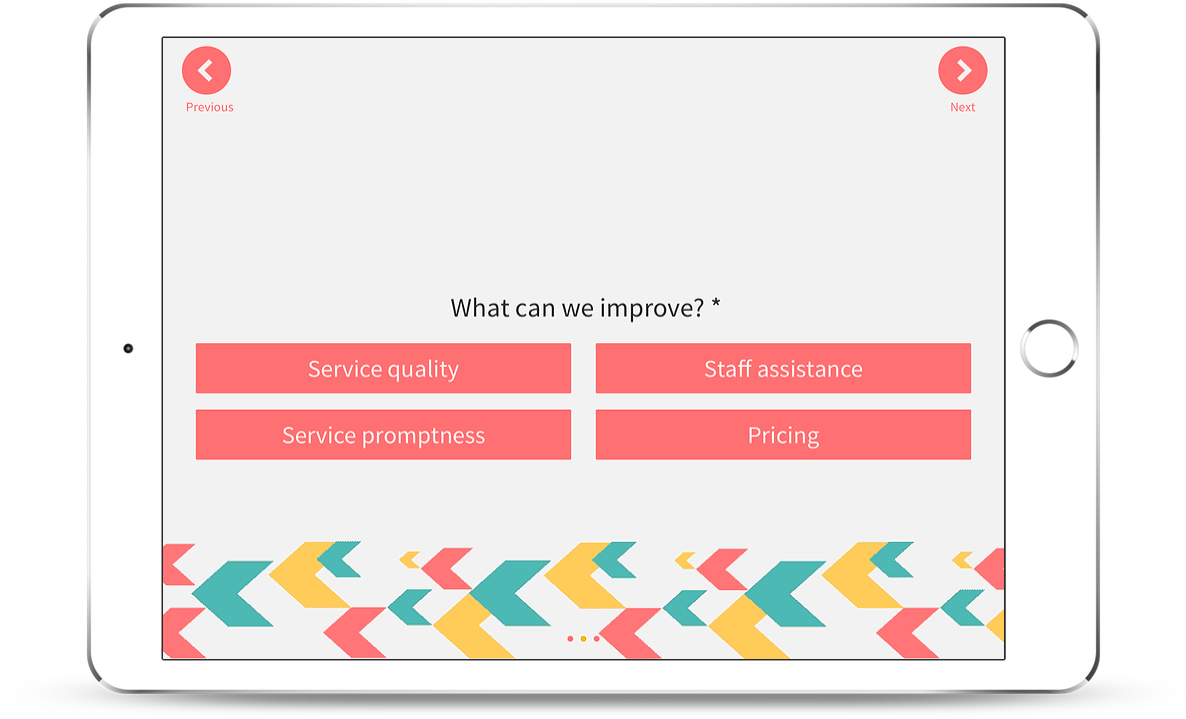How much is too much? Online surveys are easy to take and your customers might want to give you feedback, but then nobody wants to be faced with a plethora of questions that takes a long time to finish.
While you might feel that the number of questions don’t really matter, experts believe that it has a significant impact on how effective the survey is. In this article, we will look at how the idea of ‘appropriate number of questions per page’ has evolved and changed the face of tablet-based feedback systems and touchscreen tablet surveys.
From Web–based Surveys to Tablet–based Surveys
The rules of surveying and collecting feedback have been greatly depending on technological capabilities of the systems being used. In the initial days when web surveys weren’t so common, the strategy was to limit the number of clicks. This meant compression of the survey to a single page. As a result, participants would have to load a single page and submit the survey when they’ve completed answering all the questions.
Over the years, the focus has shifted to scrolling. It is said that more the scrolling, greater are the chances that a respondent would drop out. Moreover, in the era of smartphones, scrolling can prove to be a demanding task. Imagine you being faced with hundred questions about a company, related to different aspects about how it does its business.
While you might answer the first few questions eagerly, you might just scroll down later and mark answers without even reading the questions – this leads to improper analysis of survey data and the inability to know what customers actually need.
The solution to this issue was the evolution of multi–screen surveys. This meant the entire survey would be divided into multiple screens. This could depend on various complex logics, categories, interests or more.
However, having a different number of questions per survey page have been considered misleading by respondents. Users are unsure about the number of question on the next page and choose to exit. A solution to this issue came in the form of single-question-per-screen surveys that have been implemented on tablets. It is advised that you optimize questions depending on the screen size.
How do Single–Question-PerScreen Surveys have an Edge Over Multi–Questions-Per-Screen Surveys?
- The Progress Bar: This little tool not only gives respondents a sense of accomplishment and achievement but also ensures that the survey is completed. Every time a question is answered, the bar would fill up, giving your survey a sense of swiftness.
- Demanding Attention: Moving over to a new page is similar to resetting the respondent’s mind. By incorporating one question per page, you're forcing people to focus on the question. If all your questions are placed on a single page, the respondent would answer while reflecting on the previous questions, which would have a toll on the overall efficiency of the survey. This would eventually lead to survey bias, which doesn’t serve the purpose of conducting a survey.
- Incorporating Survey Logic: By having just one question per page, you can divide the entire questionnaire into multiple segments without letting the respondent know about it. This would make it easier for you to perform assessments based on various parameters and, therefore, serve your customers better in future.
Zonka Feedback specializes in creating impeccable single–question-per-screen tablet–based surveys as well as multiple-questions-per-screen surveys depending on the needs of the business as well as your objectives. You can create a survey that’s engaging as well as is easy to finish – no more worrying about customers leaving your survey midway!
To get in touch with our team, write to us at hello@zonkafeedback.com.
Take Feedback & Gather Data anywhere with the Offline Survey App🔥
Run surveys on any device in offline mode, even in remote locations and get real-time alerts, responses and insights.





.png)


.jpg)
.jpg)
.jpg)

.jpg)